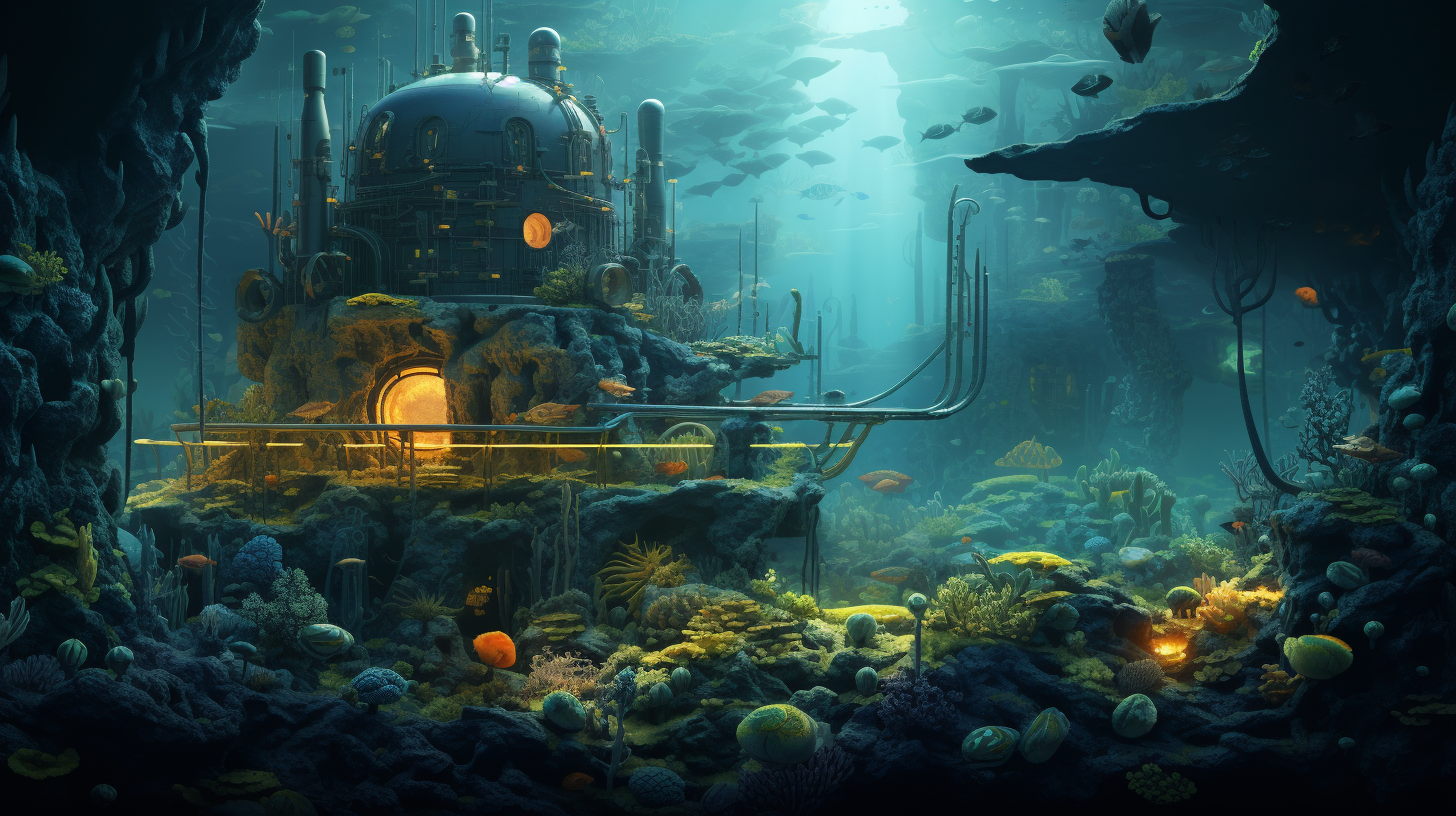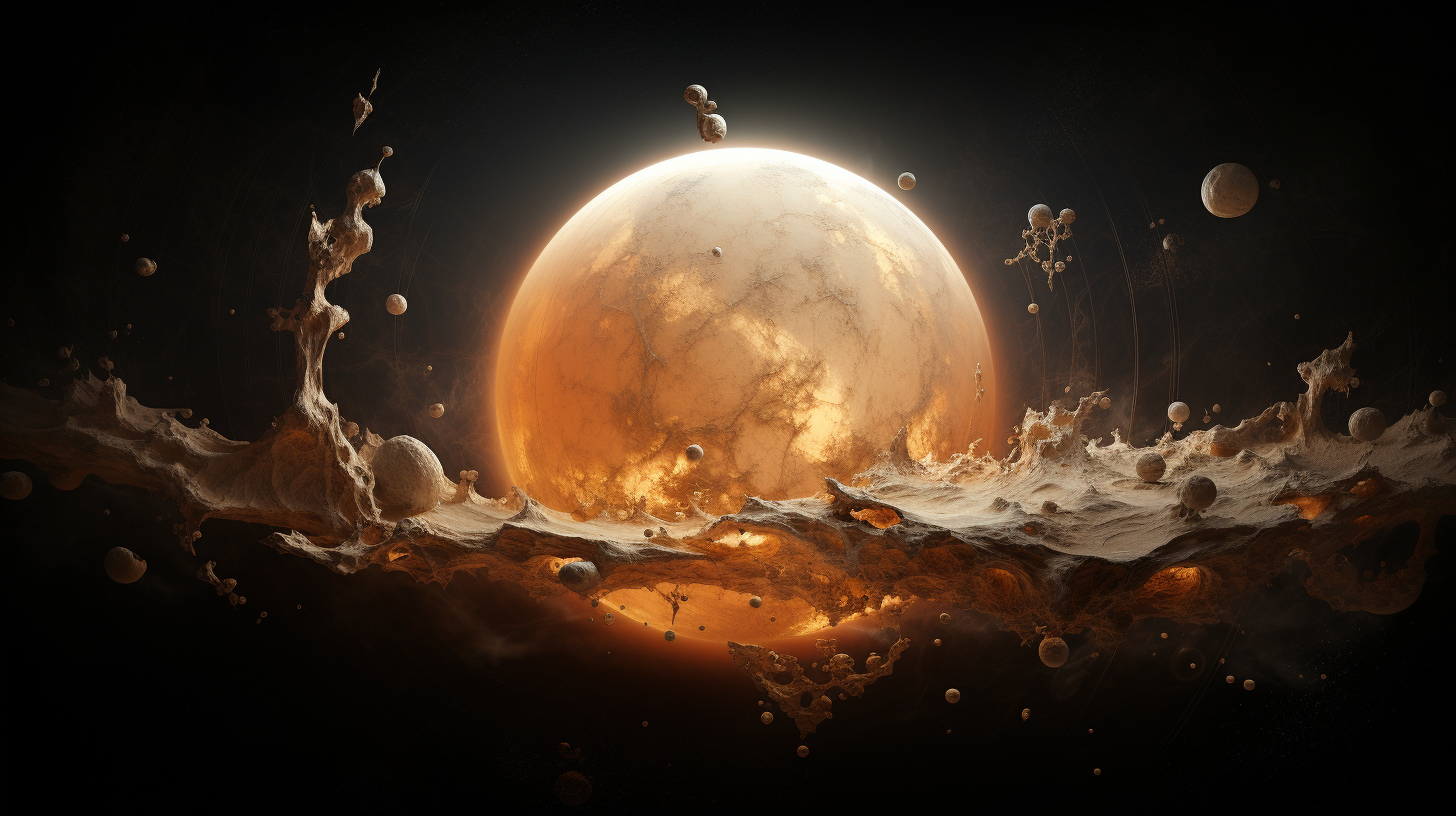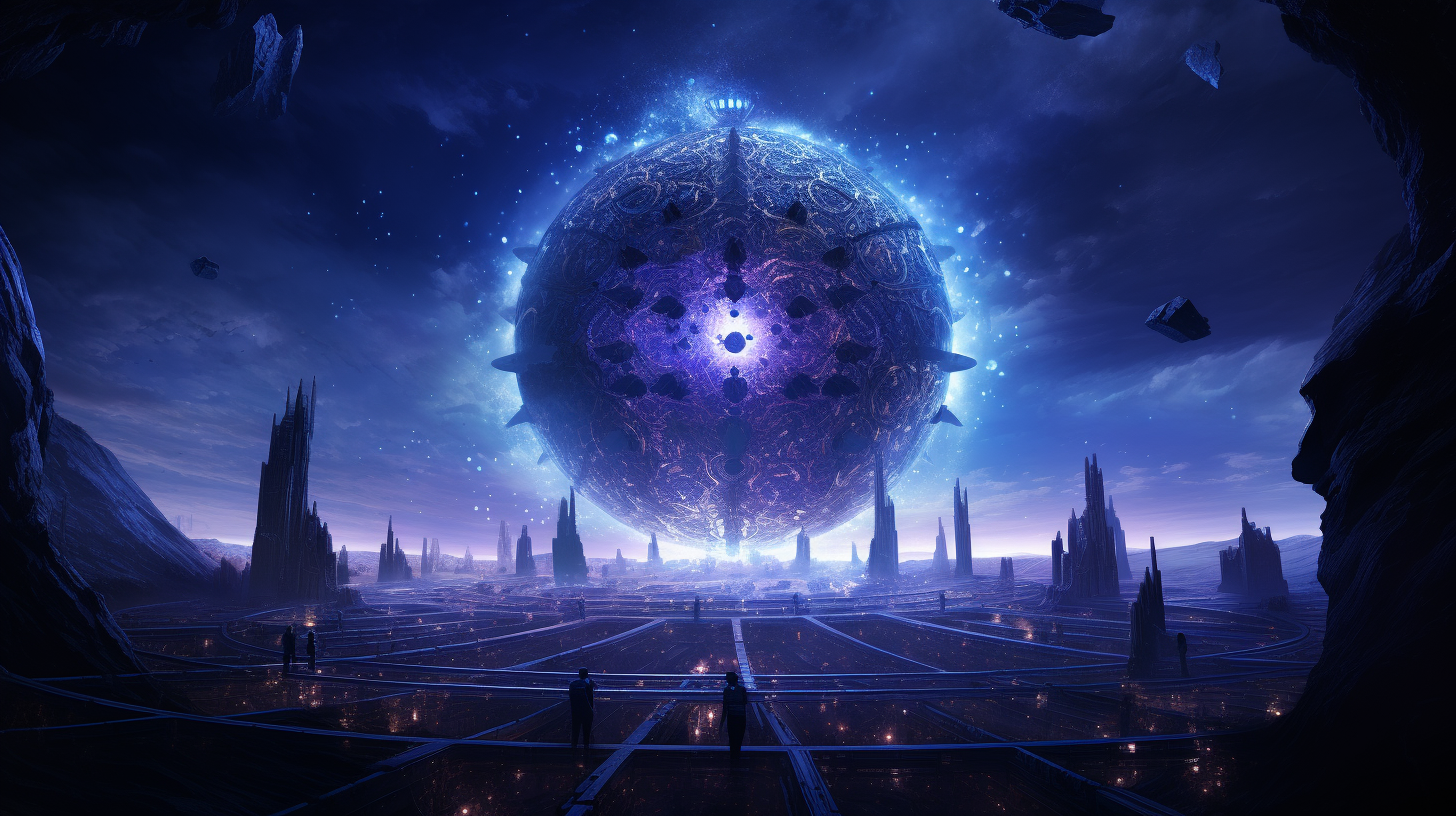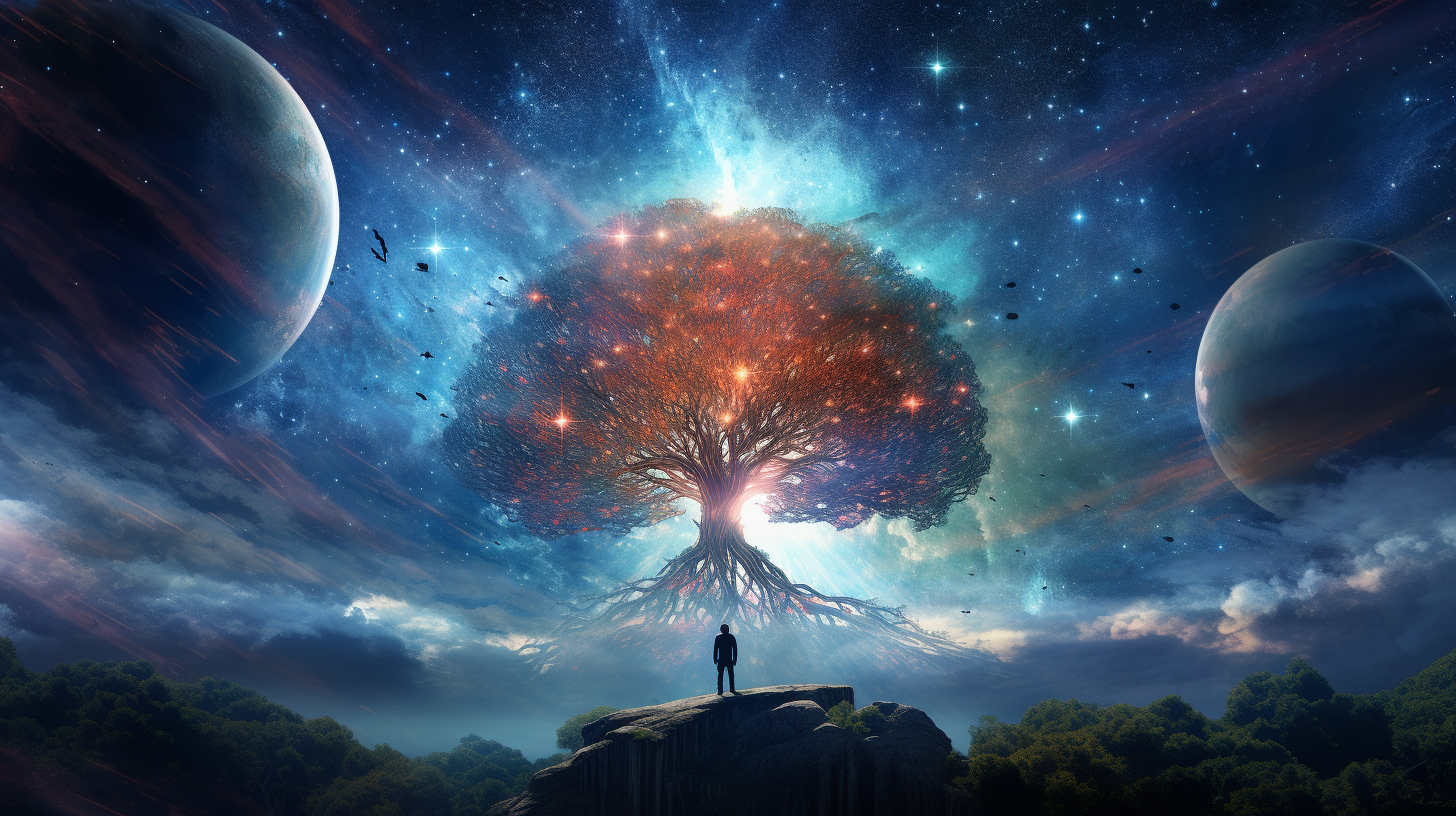The Theories of Alien Life
The cosmos is vast and filled with mysteries, one of the most intriguing being the existence of alien life. As the basic principles of probability suggest, the likelihood of extraterrestrial beings existing somewhere out there is quite high. But, our inability to make contact so far has led to the development of many theories of alien life. One main theory, “The Great Filter” theory, proposes that there may be a barrier preventing interstellar travel or communication, potentially explaining our lack of contact.
Interestingly though, recent studies have suggested that if aliens do exist, they might not be as different from us as we’ve often imagined. Groundbreaking research from the University of Oxford proposes that extraterrestrial life, much like ours, could be shaped by evolutionary processes, including natural selection. So, as we explore these captivating theories, we might just find that our cosmic neighbors aren’t so alien after all.
Astrobiology-Based
Astrobiology based life is a field of exciting and cutting-edge work that is fast materializing. This field is digging deep into origin-of-life and life-beyond-Earth issues, not just within our solar system, but also on the billions of exoplanets and exomoons that now orbit distant stars and planets. Much of this research zeroes in on the possible existence of alien life, which tilts towards the microscopic cornerstone of all existence: microbes.
Microbial Life Forms
The microscopic life on earth has shown us the vast diversity found in simplest forms of life. But what about microbial life beyond our planet? It’s likely that microbial life forms are present and thriving in the universe, as vast and mysterious as it may be.
Extremophiles
Earthbound studies have shown that microbes don’t shy away from harsh living conditions. A possible home for alien life could be in environments that are too extreme for other organisms – places which are super hot, super cold, or extremely acidic, to name a few. These tiny inhabitants are known as Extremophiles. They have been found in the harshest environment on Earth, including those that resemble Martian conditions or those of Enceladus, one of Saturn’s moons.
Subsurface Life
Microbial life could also exist beneath the surfaces of planets and moons. The interaction of water and essential organic compounds with the celestial bodies they land on could potentially generate microbial life. This subsurface life might not be visible from the surface, but chemical and mineral signs could point towards its existence.

Complex Life
On the other hand, let’s not restrict our imaginations just yet. Complex life forms that may rove alien landscapes or swim in extraterrestrial seas might be easier to find, particularly in our data gathered from their home worlds.
Ocean Worlds
The ocean worlds in our solar system like Europa (Jupiter’s moon) and Enceladus (Saturn’s moon) could potentially be habitats of complex life forms. These bodies are not only rich in essential compounds such as water and other organic materials, but also possess energy from external sources apart from the sun, allowing for a wider range of possible life forms.
Earth-Like Planets
To boot, exoplanets that share characteristics with Earth – terrestrial, within the hospitable zone, and with significant amounts of water – could be the sites of a second “genesis. If this is the case, it would stand testament to the argument that life is commonplace in the universe, with Earth-like conditions being a significant aid but not a binding requirement. The implications of this assumption are rich, making the study of extra-terrestrial life one of the most riveting fields of research today.
It makes me wonder: perhaps alien life isn’t a question of what if, but rather, where and when we’ll find it.
Panspermia-Based
The concept of panspermia approaches life from an otherworldly perspective and posits that life as we know it didn’t just appear on Earth; it was seeded from elsewhere. This conjecture opens up a multitude of thought-provoking discussions and theories in the field of astrobiology.
Direct Panspermia
Direct Panspermia puts forth the idea that life was brought to Earth through space dust, meteoroids, or asteroids that enclosed bacteria within their structures. A collision with Earth would release these microbes, giving them a chance to thrive if conditions were suitable.
Meteorite Transfer
Meteorite transfer is a prime means of direct panspermia. It follows the idea that a meteorite carrying foreign microbes collides with our planet:
- Meteoroid impacts have the ability to eject fragments of life-laden rock into space.
- These fragments are potential space vehicles, carrying lifeforms able to withstand the harsh conditions of space.
- A successful impact on Earth could result in these extraterrestrial organisms seeding life.
Directed Panspermia
Directed Panspermia further branches out from this theory, suggesting an intelligent civilization might have deliberately seeded Earth with life. It’s an intriguing idea that propels discussion about the existence of intelligent life beyond our own universe.
Interstellar Spacecraft
For directed panspermia to occur, it’s feasible that life could be transported via interstellar spacecraft or probes. This theory propels our thinking about future astrobiological missions, perhaps even with the aim of transferring life ourselves.
Lithopanspermia
Lithopanspermia contemplates on extensive interplanetary or even interstellar transfer of life. It hypothesizes that life could have been transferred from Mars or Venus considering the comparative ease of the transfer process within our own solar system.
Interplanetary Debris
In the case of Lithopanspermia, certain life forms may hitch a ride on interplanetary debris, such as the remnants of a planetary collision. As long as these life forms can survive harsh space conditions, there’s the potential for viable organisms to reach and colonize Earth, given the right circumstances.

Exploring the possibilities of life from a plethora of angles not only broadens our horizons but also makes us rethink our position in the universe. These concepts are emphasized not just in the field of astrobiology, but they also trigger stimulating and significant discussions in the minds of those captivated by the mysteries of life and the universe. Whether alien life, if it exists, advanced as far as to seed our planet, or if life is a universal norm transferred via natural cosmic processes—truth or not, these debates showcase how our pursuit of life beyond Earth helps drive cutting-edge research and unravels the fabric of life as we know it.
Technosignature-Based
Continuing our exploration into the extraordinary domain of astrobiology, we now venture into technosignature-based theories. Technosignatures, detectable signs of past or present technology used on other planets, have opened new avenues in astrobiological research. I’ll share a few lines of inquiry which, built on this concept, attempt to provide answers to the age-old question: Are we alone in the universe?
Radio Signals
Traditionally, experts have scanned the skies, using advanced telescope arrays to track radio frequencies, hoping to catch a glimpse or rather a hint of extraterrestrial life. An example that stands out in this pursuit is the unexplained extraterrestrial Wow! signal detected in August 1977 by an Ohio State University radio telescope. This 37-second long signal, originating near the constellation Sagittarius, startled astronomers primarily because it lay within the band of radio frequencies where transmissions are internationally banned, indicating a possible technosignature.
SETI Research
Pioneering the search for extraterrestrial intelligence, the Search for Extraterrestrial Intelligence (SETI) has been at the forefront of this Try. The first ever NASA non-radio technosignature grant was awarded for a crucial study in this area. This funding allows for deeper exploration into technosignatures and their implications in collaboration with international research institutes.
Atmospheric Changes
Another promising lead in our search is observing atmospheric changes, especially those that can’t be explained by natural geological or atmospheric processes.
Bio-signature Gases
Centre to this investigation are bio-signature gases—molecules or combinations of molecules that could indicate the presence of life. But, the challenge lies in understanding that extraterrestrial life may not chemically resemble Earth life, leading to novel ways of exploring life as we don’t know it, or as coined here, LAWDKI (Life As We Don’t Know It).
Dyson Spheres
As our understanding of potential technosignatures evolves, so does the scope of our search. One particularly ambitious concept is the search for Dyson Spheres—an advanced alien technology designed to capture and Use the entire energy output of a star.

Energy Consumption Patterns
Drawn from theoretical physics, the idea of spotting Dyson Spheres hinges on identifying distinct energy consumption patterns that can’t be otherwise explained. These massive constructs would significantly alter their host star’s energy emissions, leaving a unique footprint that could be identifiable from Earth.
With each passing day, our search for life beyond Earth becomes more refined, sophisticated and audacious, thanks to novel concepts such as technosignatures. While the mystery remains unsolved, our quest continues unfazed, fueled by scientific curiosity and the indomitable human spirit. Perhaps, in this vast cosmic theater, the curtain is just about to rise.
Ancient Astronaut Theory
Ancient Astronaut Theory is an idea that suggests that extraterrestrial beings, often referred to as “ancient astronauts,” visited Earth in ancient times and had a significant influence on human history and civilization. Proponents of this theory argue that many ancient myths, religious texts, and archaeological findings contain evidence of contact with advanced beings from other planets.
The theory goes so far to say that humans are a result of genetic engineering. Whilst it sounds like an outlandish concept, is it really that crazy? Theoretically it could be possible.
Wrap Up
In our journey through the cosmos, we’ve ventured into the realm of technosignatures and the hunt for alien life. We’ve seen how radio signals and SETI research are pioneering our search for extraterrestrial intelligence. Not to mention, the study of atmospheric changes and the pursuit of bio-signature gases are opening new doors in our understanding of life beyond Earth.
The notion of Dyson Spheres, an advanced alien technology, has also sparked our imagination. It’s a testament to the boundless possibilities that space exploration holds.
As we continue this quest, let’s remember that the discoveries ahead may change our perception of life and our place in the universe. This is not just about finding aliens – it’s about expanding our understanding of what’s possible. Here’s to the mysteries that await us in the great cosmic ocean.






